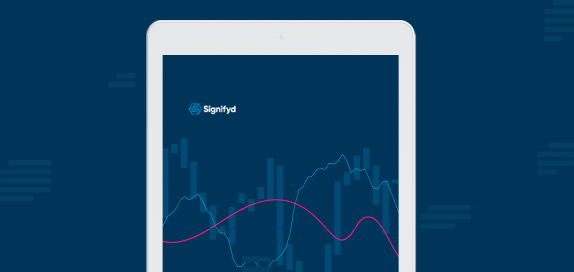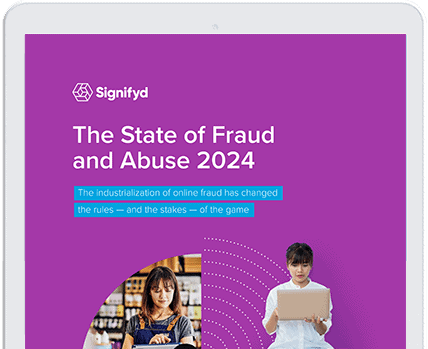Online shoppers gifted merchants a monster December to end the holiday season
The holiday season wrapped up with a monster December as online sales increased 24% over a year ago, according to Signifyd data. The robust finish, driven partly by a quirk of the calendar, pushed sales up 7% for the season as a whole.
Coupled with today’s U.S. Commerce Department report that overall retail sales — online and in-store — were up 3.9% for the month, Signifyd’s online data puts a rosy stamp on a season during which consumers shopped through their sour take on the economy and elevated prices. Retail enjoyed record holiday spending in November and December, according to the National Retail Federation. landing at $994.1 billion.
“Consumers came out to spend this holiday season and clearly underscored the solid growth in the U.S. economy,” NRF Chief Economist Jack Kleinhenz said in a written statement on Thursday. “The spending pace was back to pre-pandemic growth and indicates a good start for the year ahead. Even though consumers are still relatively healthy and there was a notable increase in spending, they remain budget conscious.”
The month owes its double-digit percentage rally to the fact that unlike last year, a big chunk of Cyber Five sales landed in December this year. In fact, 40% of Cyber Five online spending — including the Sunday after Thanksgiving and Cyber Monday — happened in December.
Fears that a late Thanksgiving and election year distractions would take their toll on holiday spending turned out to be unfounded. Instead, both retailers and consumers were resilient and determined when it came to the holiday shopping season.
Among the other highlights from the 2025 holiday season, according to Signifyd data:
- Consumers are no longer laser-focused on Cyber Week, as several weeks in the quarter registered annual online sales increases that far outpaced Cyber Week’s 7% uptick over 2023. The week before Cyber Week, for instance, saw a 15.7% year-over-year sales boost.
- Shoppers continued their value-conscious ways and retailers appear to be adjusting their promotional strategies to the new reality. The percentage of items selling at their lowest price of the year during the week before Cyber Week increased to 20% from 11% the previous week — no doubt spurring sales.
- Despite the shifting shape of the holiday season, Black Friday and Cyber Monday remain the reigning champions in terms of overall sales. Signifyd data shows that Black Friday shoppers spent nearly four times as much online as on a typical 2024 day. On Cyber Monday, they spent just over three times as much.
Signifyd Senior Data Analyst Phelim Killough said while the short shopping season between Thanksgiving and Christmas wasn’t detrimental to overall sales in the fourth quarter, it still might have shaped the way consumers shopped.
“We saw a dramatic year-over-year boost in ecommerce sales the week before Cyber Week — much bigger than the increase during Cyber Week itself,” Killough said. “Our data also showed that the number of significant deals doubled that week, offering the best prices of the year on a significant number of items. As we’ve seen for some time, consumers are not solely focused on Black Friday and Cyber Monday. Value-oriented shoppers will shop when they see the deals they like and when their busy lives allow.”
Breaking down December sales by vertical, spending was up considerably in every retail category compared to last year. While categories such as beauty and cosmetics and luxury — often associated with gift-giving — did well, another gifting favorite, electronics, fell far short of the monthly average.
December ecommerce sales growth — 2024 vs. 2023 |
| Beauty & cosmetics | 47% |
| General merchandise | 43% |
| Luxury goods | 32% |
| Apparel | 28% |
| Grocery | 24% |
| Leisure and outdoor | 23% |
| Home goods | 16% |
| Electronics | 6% |
| All categories | 24% |
Here’s how we came up with the numbers for this report
This blog post relied on Signifyd’s Ecommerce Holiday Season Pulse Tracker data, which is derived from transactions on Signifyd’s Commerce Network of thousands of ecommerce retailers and brands. Commerce Network intelligence also powers Signifyd’s Commerce Protection Platform, which leverages AI-driven machine learning models and data from billions of transactions to detect and block fraudulent activity while increasing the number of good orders approved. Signifyd has seen more than 600 million unique shopper wallets globally, meaning that 98% of the time when a shopper comes to a Signifyd-protected site, Signifyd’s machine-learning models recognize the shopper instantly. Signifyd defines the holiday season as October through December.
Photo by Getty Images
Want to prepare for sales spikes any time of year? We can help.












